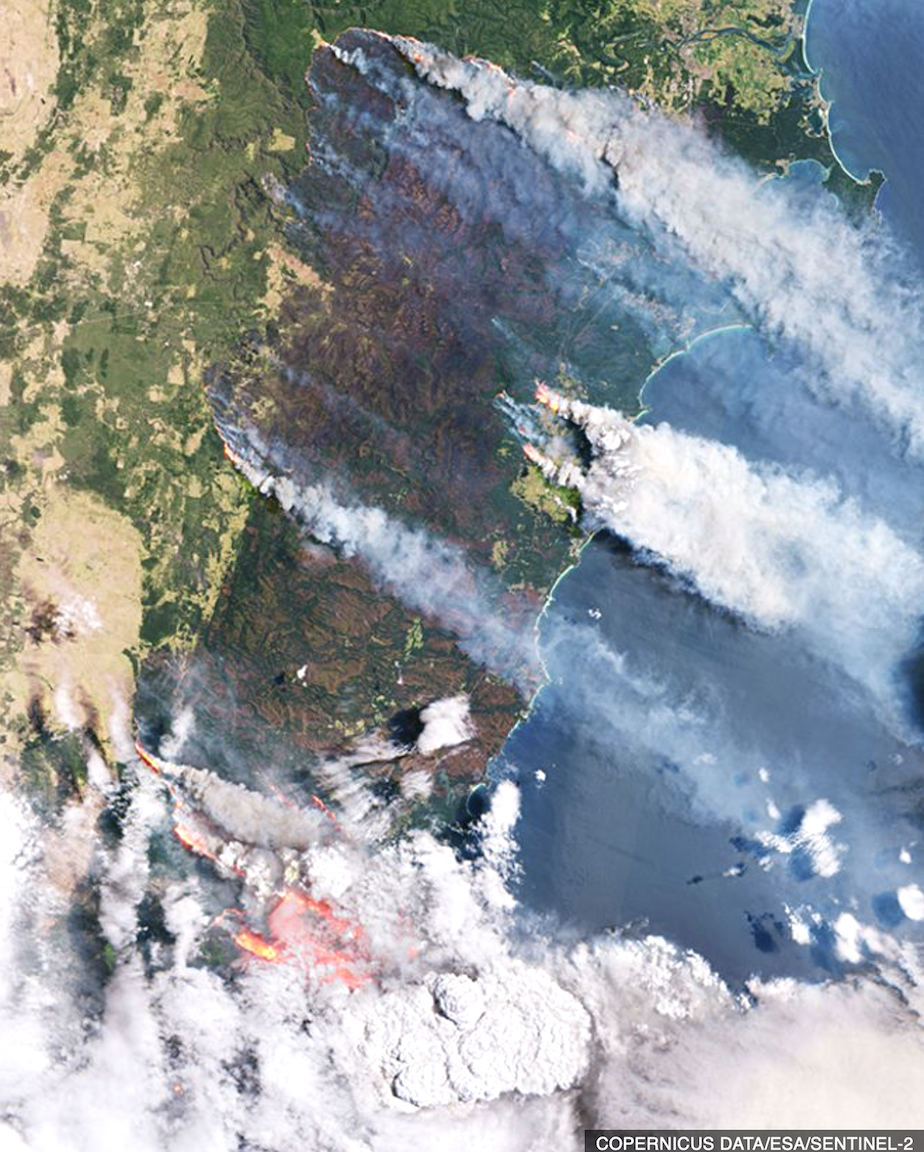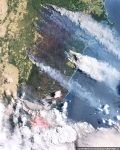Australian scientists are developing a satellite that can better identify where bushfires might start.

The 2019/2020 fire season was unprecedented for the forest area that was burned
The small spacecraft would carry infrared detectors specifically tuned to the country’s dominant vegetation — in particular to its widespread eucalypt trees and shrubs.
The satellite’s data will be used to help assess the “fuel load” and moisture content of forests.
Authorities could then take the necessary action to mitigate any risks.
The 2019/2020 fire season was a record-breaker. Hot, dry weather and an abundant forest floor “litter layer” made for perfect ignition conditions.
Australian researchers already use satellites to investigate fire potential.
The camera on Europe’s Sentinel-2 spacecraft, for example, has shortwave infrared channels that are very good at checking on the state of vegetation.
But a group led from the Australian National University (ANU) in Canberra believes a bespoke mission could provide more accurate and more relevant information.
At the core of the team’s system would be new sensors that were originally developed for astronomy.
These high-speed detectors could delineate reflected light into the very fine bands that are most characteristic of the properties of eucalypt species.
“We’re trying to detect small changes in the spectral signatures of the trees,” explained Dr. Marta Yebra, an InSpace Mission Specialist from the Fenner School of Environment and Society.
“So we might look for structural changes such as changes in the number of leaves in the canopy; changes in the lignin content; changes in the water content. All this is related to the conditions that affect the amount of fuel available to fires.”
Prof. Rob Sharp is an instrument scientist at the ANU Research School of Astronomy and Astrophysics.
He said the infrared detectors came out of R&D work for an upcoming super-telescope known as the Giant Magellan Telescope.
He recalled: “We were also planning a small space telescope to go on the space station to do astronomy because that’s what we understand. And then as the wheels started to turn we sort of realised, well, if we can do astronomy with it, what happens if we turn it round to look at the ground?”
“There are really interesting applications in the infrared for not only the bushfire work but for agricultural monitoring; and also mineralogical surveys, which is a big deal here in Australia.”
The ANU team says it will take a couple of years to build, test and launch the spacecraft. It would be suitcase-sized and have a resolution on the ground of about 10m.
Ultimately, the researchers would like to see a constellation of small spacecraft. This would bring “eyes overhead” more frequently.
The country is currently beefing up its space activities. In July 2018, it took the decision to set up a national space agency.
By Jonathan Amos, BBC Correspondent, BBC News

